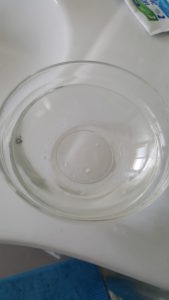Afro hair care and curl patterns
Afro’s come in different textures, volumes, shapes and sizes. The only thing that is consistent with them is that they are all curly. To identify how well to look after your afro, there are 2 things you must identify. The first thing you must do to is identify your curl pattern. Identifying your curl pattern helps you in knowing which products are better for your hair. There are various curl patterns and you can check them out on a few websites. The loose type of curl pattern is identified from 3A. This type of curl pattern is loose and tends to form ringlets on the head of an individual that has this type of hair. Type 3 hair ranges from 3A – 3C.
3A tends to look like this below:

The most common type of curl pattern for more coily hair is type 4 hair. It also ranges from 4A- 4C. This hair get’s extremely dry and can be deemed hard to maintain. It also tends to shrink when washed, therefore it’s hard to tell how long the hair is until you stretch it out.
You can easily identify that hair type when you see it anywhere. Here is an example of a look below:

Hair Porosity in afro hair
The second thing to identify is the hair porosity. This took me a while to identify, however it is extremely important to know what your hair porosity is because if you don’t know again you can use the wrong type of products and get the wrong results. As mentioned earlier in this piece, maintaining natural hair does not have to be expensive and I am not a product junkie, therefore if you want to save yourself the heartache of spending on products you don’t need, make sure you know these 2 things. Hair porosity is important because it determines how much moisture your hair can maintain. little hair porosity means that if you pulled a strand off your hair and put it in a glass of water, it would float. This means that it would take longer for any products to get on your hair. For my hair I realized that shea butter and coconut oil work best as they moisturise it easily. But remember you must rub the oils in your hand otherwise the products can sit on your hair. more hair porosity, means that if you take a sample of your hair and put it in water it will sink. This means that you can use lighter oils and your hair will take in the product.
Therefore to make sure that your afro is well looked after, know the type of curl pattern and porosity as these items will help in determining the type of products you can use.
Below is a quick demonstration of hair porosity types:

Here is an example of hair that has higher porosity and therefore easily get’s moisturized.

It’s not really clear to see at it has sunk to the bottom of the glass, however the hair is straighter and obviously has higher hair porosity.
Therefore you would think what would you do with hair that has low hair porosity. The secret is to make water your friend. In winter that is a challenge, but it does not hurt to moisturize as often as you can. However protective styles, which I shall cover later can assist during the colder periods.
During summer have a water spray with some light oil. My preference, water mixed with jojoba oil.
GELS
I find that it is harder for me to use gels on my hair because they always leave some type of residue and I have used most of them. Aloe vera is gentler, however gels just don’t seem to work very well for me at all. Therefore I don’t use them.
For those with high porosity hair, some gels tend to work really well and minimize frizz. Nowadays there are so many gel types around like Camille rose, Cantu, Shea moisture, curly custard e.t.c just to name a few.
I find that they look amazing on high porosity hair and low porosity. But if you have low porosity, you know that you will get white residue on your hair which does not look great. Spraying with water works but the struggle to maintain less frizzy hair is very real.
The main goal of this article was to assist in helping you identify your hair type to make sure that you know the best products for your hair. Do you know your hair type and if you have low porosity or high porosity?
